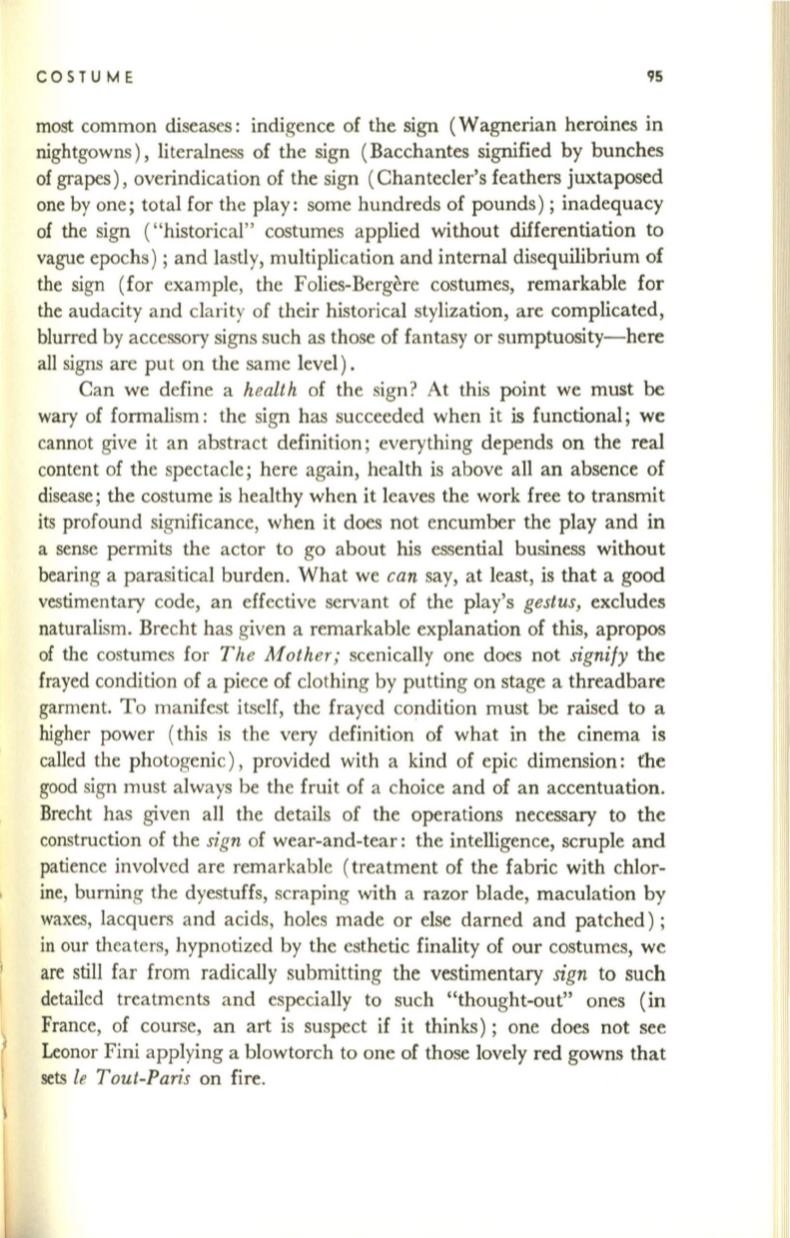
COSTUME
95
most common diseases: indigence of the sign (Wagnerian heroines in
nightgowns), literalness of the sign (Bacchantes signified by bunches
of grapes), overindication of the sign (Chantecler's feathers juxtaposed
one by one; total for the play: some hundreds of pounds) ; inadequacy
of the sign ("historical" costumes applied without differentiation to
vague epochs) ; and lastly, multiplication and internal disequilibrium of
the sign (for example, the Folies-Bergere costumes, remarkable for
the audacity and clarity of their historical stylization, are complicated,
blurred by accessory signs such as those of fantasy or sumptuosity-here
all signs are put on the same level).
Can we define a
health
of the sign? At this point we must be
wary of formalism: the sign has succeeded when it is functional; we
cannot give it an abstract definition; everything depends on the real
content of the spectacle; here again, health is above all an absence of
disease; the costume is healthy when it leaves the work free to transmit
its profound significance, when it does not encumber the play and in
a sense permits the actor to go about his essential business without
bearing a parasitical burden. What we
can
say, at least, is that a good
vestimentary code, an effective servant of the play's
gestus,
excludes
naturalism. Brecht has given a remarkable explanation of this, apropos
of the costumes for
The Mother;
scenically one does not
signify
the
frayed condition of a piece of clothing by putting on stage a threadbare
garment. To manifest itself, the frayed condition must be raised to a
higher power (this is the very definition of what in the cinema is
called the photogenic), provided with a kind of epic dimension: the
good sign must always be the fruit of a choice and of an accentuation.
Brecht has given all the details of the operations necessary to the
construction of the
sign
of wear-and-tear: the intelligence, scruple and
patience involved are remarkable (treatment of the fabric with chlor–
ine, burning the dyestuffs, scraping with a razor blade, maculation by
waxes, lacquers and acids, holes made or
else
darned and patched) ;
in our theaters, hypnotized by the esthetic finality of our costumes, we
are still far from radically submitting the vestimentary
sign
to such
detailed treatments and especially to such "thought-out" ones (in
France, of course, an art is suspect if it thinks); one does not see
Leonor Fini applying a blowtorch to one of those lovely red gowns that
sets
le Tout-Paris
on fire.


